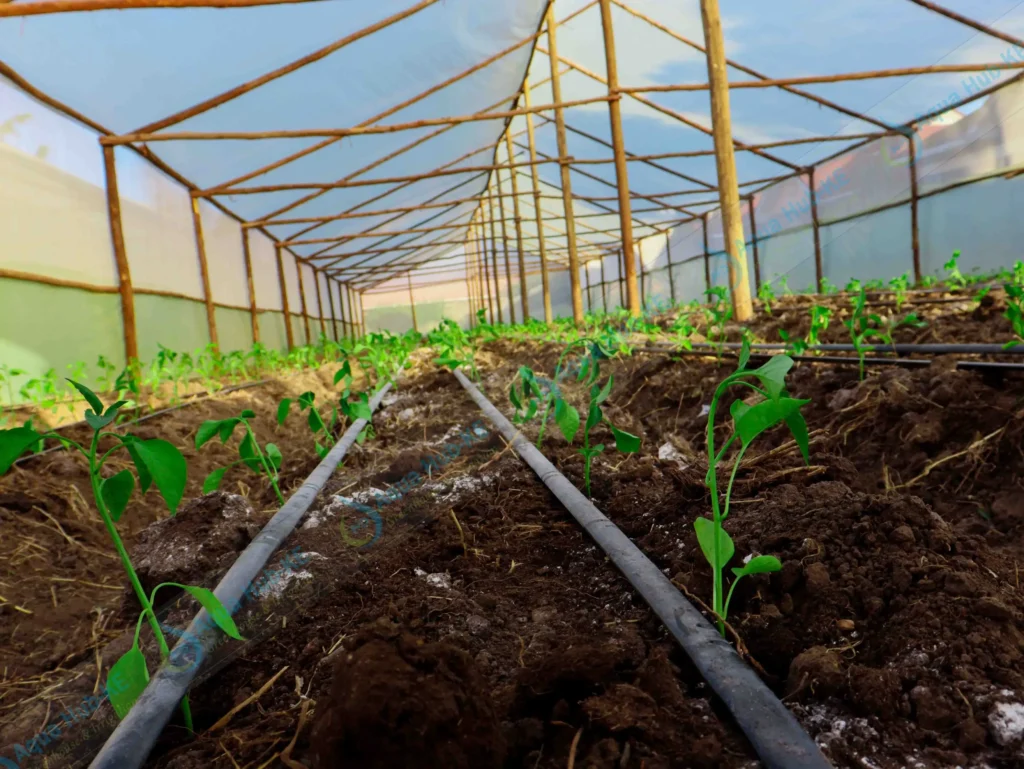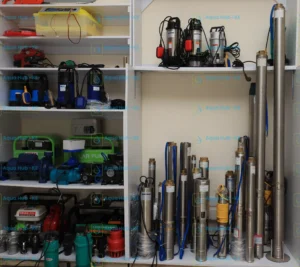One acre drip irrigation kit supports cultivation of crops covering 4096 square metres. It is inclusive of 6 rolls of driplines 1000m each, mainline HPDE pipe 260m long, screen water filter, connectors, end caps and gate valves. Drip irrigation kits are improvised for watering vegetables, tomatoes, onion, capsicum, and fruits. The average cost of our one-acre drip irrigation kit is from KES 140,000 to KES 185,000.
Our drip irrigation kits are for sale at convenient prices and will help you save water, reduce production cost and improve crop yield.
Call 0790719020
In this blog post, we are going to explore the use of drip irrigation kits, crops suitable, prices and how to install them.
What is a Drip Irrigation Kit?
Drip Kits are the full set of irrigation accessories including pipes, driplines, connectors and fittings for setting drip irrigation system.
How do Drip Kits Operate?

With drip irrigation kits, the water goes straight to the root zone in a minimized amount. The pipe connection is laid and done on the ground, with the driplines along the plant line to equally wet planting holes. The method often distributes water with the help of gravity so long as the land is flat. Otherwise, you would need a pump to push water uphill in case the land is hilly.
The system is commonly ideal for vegetables, fruits, herbs, flowers, corn, onions and small trees.
Advantages of Using Drip Irrigation Kits
Minimal water use
Driplines are designed to minimize water use by just delivering drops on the exact spots with planted crops. On average it saves water by 60%.
High productivity
Because plants receive the optimal moisture rates, they grow better and develop higher yield. Drip irrigated plants yield 30% more compared to other methods.
Labour & Cost Savings
Less watering by hand means less labour. This is especially helpful on larger farms. You also reduce water wastage and soil erosion.
Ideal for wide range of land sizes
Drip irrigation kits are customizable to fit different land sections from 1/8 to 1 acre or several acres of land.
Works perfect even in harsh climates
Our drip irrigation kits are manufactured from durable UV treated Polythene materials. They are designed to resist degradation from the sun or cold conditions.
What Does a Drip Irrigation Kit Include?
When you buy a drip irrigation kit, you are not just buying drip lines. The complete accessories include:
- Drip lines or drip tape – These are the thin-walled emitter pipes from which water slowly drips to each plant.
- Main pipe and sub-main pipes – distribute water from the tank or source to the drip lines.
- Filter – Prevents silt and particles from clogging the drip lines.
- Valves – controls the flow of water. The farm is irrigated in sections therefore you need valves to control water distribution.
- Connectors – HDPE connectors for mainline pipe connection. Drip connectors are also required for dripline connection.
Our drip kits do not come with tanks; tank stands and seedling trays. The cost of transport and labour for installation is also not included but should be referred to the terms laid in the quotation.
How Much Do Drip Irrigation Kits Cost in Kenya?
One acre drip irrigation kit go for different prices depending on the farm size and dripline type.
For our different packages available the minimum prices of drip kits are as follows.
- 1 acre – KES 145,000
- ½ acre – KES 65,000
- ¼ acre – KES 35,000
- ⅛ acre – KES 20,000
Generally, for driplines alone, the prices vary with the dripline type, often differentiated by the dripline emitter spacing. Available driplines are 15 cm dripline, 20cm dripline and 30 cm dripline.
How to Choose the Right Drip Irrigation Kit for Your Farm
Step 1: Determine the Farm Size
Measure the area you want to irrigate. Are you working with a kitchen garden (small), half acre, or full acre?
Smaller kits are for kitchen gardens or small plots; larger kits are for commercial farming.
Step 2: Decide the Crop Type
Different crops need different planting spacing and may need different drip line types.
For example: onions, garlic may need more drip lines per bed.
Vegetables like tomatoes, cabbages, spinach may use fewer drip lines.
Fruit trees or widely spaced crops may use button drippers.
Step 3: Check Water Source and Tank
You need a reliable water source. The tank should have high water storage capacity and raised 3 m high to achieve gravity flow.
Step 4: Quality and drip kit components
Make sure the kit includes drip lines, main pipe, connectors, filter, valves.
Quality matters: UV-resistant materials, correct emitter spacing, good fittings.
Step 5: Layout & Design
Good layout ensures even water distribution. Your supplier or you should measure slope, tank distance, bed width, row spacing. This improves performance.
Step 6: Budget and Return on Investment
Consider how much you’ll invest now and how quickly you can recover the costs from increased yield or saved water.
High-value crops (like vegetables for market) can recover costs quickly.
Lower-value crops may take longer so match your crop to your investment level.
Step 7: After-sales Support & Maintenance
Choose a supplier who offers good support, manuals, or installation help. Maintenance is crucial to ensure your drip kit lasts and works well.
Step-by-Step: Installing a Drip Irrigation Kit
- Prepare your land – Clear weeds, shape beds or planting rows, make sure the slope allows water flow if using gravity.
- Install the tank & stand – The stand should raise the tank to create gravity pressure. Or set up a pump if required.
- Install main pipes and filter – From tank to field: main pipe brings water. Install a good filter at entry point to prevent clogging.
- Install sub-mains and manifolds – Branch off from the main pipe to smaller distribution lines.
- Lay out drip lines – These run along your planting rows or beds. Make sure spacing is right for your plants.
- Install valves and connectors – Each bed or section should have a valve to control flow. Connectors link pipes and drip lines.
- Flush the system and test – Before planting, flush out dirt and check each drip line for even flow.
- Plant your crops – Once system is working, plant as planned.
- Monitor and maintain – Weekly check for clogged emitters, broken lines, leaks. Clean the filter regularly.
Common Mistakes to Avoid When Installing Drip Kits
- Ignoring the filter – A dirty or missing filter leads to clogged drippers.
- Incorrect tank height or pressure – If tank too low or pump inadequate, flow may be weak and uneven.
- Bad layout – Uneven slopes or long runs without proper manifold design = uneven water supply.
- Poor maintenance – Not cleaning the system or ignoring leaks means waste and reduced lifespan.
- Poor quality drip kits – Very low-quality drip tape may break down in sun or use too thin pipes which may collapse.
Which Crops Work Well with Drip Kits?
Drip irrigation kits are designed to suit irrigation of wide crop varieties. The common crops that you can grow and water using drip kits include:
- Vegetables: tomatoes, onions, capsicum, spinach, kale
- Fruits: watermelon, strawberries, passion fruit
- Trees & orchards: avocado, mango, citrus (using button mist/dripper kits)
- Herbs & spices: basil, mint, rosemary
- Nursery plants & greenhouses

Where to Buy Drip Irrigation Kits in Kenya
Aqua Hub LTD.
Our terms of supply will favor you and your growing needs because we are known for quality and professional drip irrigation kit installation.
In addition, we often help you identify the profitable crop to grow and ideal farm to start with in case you are starting.
Proper maintenance of Drip Irrigation Kits
To make your drip irrigation kit last and work well over time, follow these tips:
- Flush lines regularly – Once a week or after heavy rains to remove dirt and silt.
- Clean or replace filter – A clogged filter means clogged drippers.
- Check for leaks and broken parts – Fix immediately to avoid water waste.
- Avoid sharp bends in drip lines – This can reduce flow or break the line.
- Cover exposed lines if possible – UV and sun can degrade plastic.
- During dry season – Monitor flow carefully; make sure all lines are working.
- When changing crop or bed design – Adjust drip line spacing to fit.
- Good record-keeping – Note when you installed, when you flushed, any issues. Helps with future decisions.
Case Study Story: A Farmer Using Drip Irrigation Kit in Naivasha
John, a client from Naivasha, had been struggling with watering his vegetable farm with overhead sprinkler which wasted much water. He was relying on municipal water and often his water bills were very high. In January 2023, he decided to try drip irrigation after reaching out to us for a solution.
“I first heard about Aqua Hub from a friend who was already using their drip kits to water his onion farm. He was happy with how he reduced his water use and how the onions were doing well. I was skeptical at first, but when I visited their office in Nairobi, the team was super helpful. They didn’t just sell me a kit they walked me through everything from choosing the right drip lines for my sandy soil to spacing the emitters for my tomato and Sukuma wiki”, he says.
John Opted for our Standard 1 acre drip irrigation kit but later scaled up and installed on another acre. We delivered the accessories and helped him with installation.
What Changed After Installing the Drip System
Before the drip kit, he was using about 25,000 liters of water per day just to keep my crops alive during dry season. That’s a lot when you’re paying for billed water. After installing Aqua Hub drip irrigation kit, the water usage reduced to 10,000 liters per day. That’s close to 60% drop in water use. Weeding also became easy because the weed growth was suppressed.
John has also mastered how the drip irrigation kits are operated. He reflects on how the system has made his work easier.
“With the overhead sprinklers, I needed two workers just for watering. One person checks the system in the morning, adjusts the timer, and that’s it. The automatic timer and filter system from Aqua Hub keeps everything running smooth. No clogging, no leaks even after two years.
Last season, I made KES 1.2 million from my 2 acres which is double the income I was making before I install the drip kit.”
Frequently Asked Questions
It depends on the elevation of your farm. For a flat land, you can set up a tank 3m high and use gravity. However, if your farm is not flat, you need a pump to ensure even water distribution.
It depends on crop, soil, weather. Because drip is efficient, you might water less often but for longer. Most crops require 3 – 4 days a week.
Yes, but you must design properly. On sandy soils water percolates fast, on clay soils it holds longer. Drip irrigation kits allows better irrigation control.
Yes. Drip kits installation allows you to add more drip lines or more sections.
No. The water storage tank is not included in our drip irrigation kit prices.
Use button drippers rather than driplines. Button drippers are spaced according to the plant spacing and thus saves water and delivers sufficient flow rate.
between KES 140,000 to KES 185,000.
6 rolls of 1000m each.
5 – 10 years under proper maintenance.
From KES 25,000 for ⅛ acre to KES 185,000 for 1 acre. Price varies with the layout or driplines per bed.





